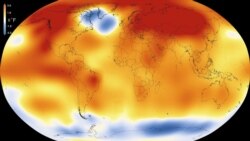Climate change is the defining issue of our time, because it affects nearly every aspect of human lives.Floods, droughts, heat waves and other types of extreme weather reduce harvests, threaten the lives and livelihoods of those living on the margins, and have a disproportionate impact on the extreme poor.
Because many of the poorest people live off the land, they are more susceptible to the impacts of extreme weather conditions. And climate change is expected to lead to increased frequency and intensity of extreme weather events, such as storms, droughts and precipitation. Extreme weather events can have devastating effects on subsistence farmers. While no one event can be attributed to climate change, the East African drought of 2011-2012 contributed to a famine in Somalia, which contributed to the deaths of an estimated quarter of a million people. In Nepal, Pakistan, Bangladesh and some parts of South and East Asia, the combination of flooding caused by unusually heavy rains, poverty and low levels of development regularly brings hunger and death.
Two years ago, President Barack Obama set a new goal for United States development policy—eradicating extreme poverty within one generation. In the recent past, that would have meant an extra push to deliver humanitarian aid, to produce more energy, and to increase educational opportunity for both children and adults. But now, the effort to eliminate extreme poverty must include programs that will help everyone, especially the extremely poor, prepare for the effects of climate change.
Today, with the U.S. Agency for International Development, or USAID, in the lead, the U.S. government is working in partnership with public, private and transnational actors across the globe to anticipate the effects of climate change and build resilience.
In Ethiopia, the U.S. is introducing new technologies to improve long-term weather forecasts so farmers can make long-term, informed planting decisions.
In Bangladesh, the U.S. is providing farmers with science relevant to their situation, information, useful tools and training to help them adapt to changing conditions.
And in Nepal and several other countries, USAID and NASA are using satellite imagery to help the people and government there better prepare for and respond to landslides, floods and deforestation and degradation of forests..
The United States is committed to end extreme poverty and promote resilient, democratic societies. Preparing for the effects of climate change is an essential part of the process.

















